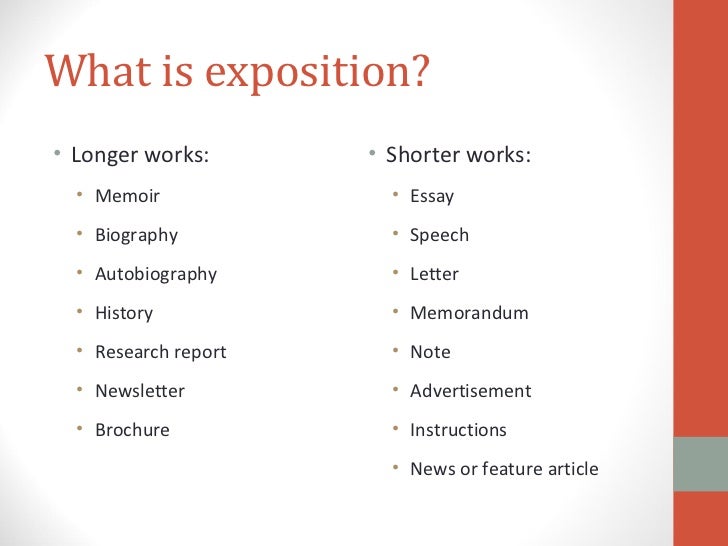

In non-linear narratives (stories that include flashbacks or move backward and forward in time), writers are more likely to scatter expository details throughout the work. In linear narratives (stories in which a writer describes events in the chronological order in which they occur), writers often include the bulk of the story's exposition near the beginning, then add additional expository details throughout the story-for example, each time a new character, setting, or key idea is introduced.

Exposition isn't always quite that easy to spot, but some form of exposition appears in almost every work of literature, and readers typically rely on exposition and background information to give context to the main events of a story.
Exposition writing how to#
Here's how to pronounce exposition: ek-spuh-zih-shun Understanding ExpositionĬlassic fairy tales often use the words "once upon a time" to introduce expository details, like who the main characters are, where the story is set, and what the major conflict or problem of the story might be. It's important to understand that all literature involves some sort of exposition, and it can be done either well (such that as a reader you almost don't realize it's happening) or badly (such that it lamely messes up the pacing or energy of the story).

Some additional key details about exposition: Exposition can cover characters and their relationship to one another, the setting or time and place of events, as well as any relevant ideas, details, or historical context. What is exposition? Here’s a quick and simple definition:Įxposition is the description or explanation of background information within a work of literature.


 0 kommentar(er)
0 kommentar(er)
